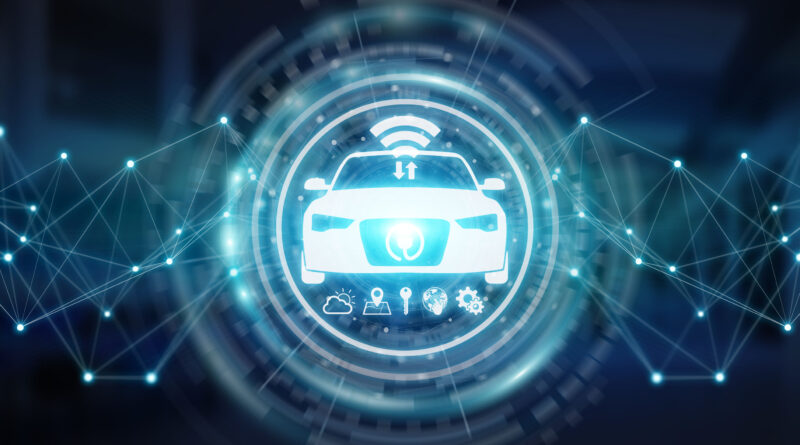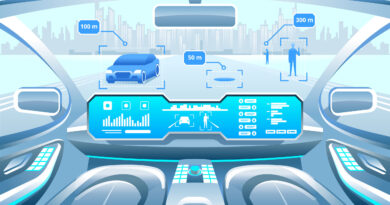Automotive SOTA: The next step for connected cars
Vehicles becoming “smartphone-like” and receiving software updates automatically (SOTA, software-over-the-air) will heavily improve after sales services. More and more Automotive OEMs are improving their fleets capabilities on Automotive SOTA. Where are we today?
The importance of software in the automotive industry has steadily grown for several decades. It was especially the rise of Tesla during recent years, that inevitably has shown the auto industries need to go far beyond just having more and more lines of code in a vehicle. The challenge is a 100% changed paradigm to place software (and the corresponding E/E architecture) in the centre of the development of a new vehicle.
The big gap between this new way and traditional automotive engineering can be illustrated looking at the possibility of “software over the air”-updates (SOTA). This technology got a lot of prominence during the last years with Tesla’s efforts to (from time to time) offer benefits like better battery management or even more power just by changing software features in the car – and without visiting a workshop.
SOTA – What’s that?
For such an OTA software update, the vehicle connects to the vehicle manufacturer’s central backend server via its digital cellular interface (or another suitable wireless interface such as Wi-Fi) on a regular basis or as needed. Fortunately, the mobile communications interface for the automatic emergency call system eCall, which is mandatory for all new vehicles in the EU since 2018, offers a great opportunity to have at least the necessary communication infrastructure already on board.
The manufacturer backend then checks for new software updates for the current vehicle configuration (for example, based on the individual VIN, Vehicle Identification Number) and, if necessary, subsequently transmits them wirelessly to the vehicle, regardless of its location. Such a software update can either cover one or more software applications as a whole (complete update), replace only one or more subcomponents (partial update), or transmit only the data sequences that are actually different or new down to the byte level (differential update). In this case, the reduction in the amount of update data to be transmitted comes at the price of a correspondingly more sophisticated update mechanism in the vehicle’s ECU. Today, typical data volumes for vehicle updates range from a few kilobytes to a few megabytes for normal ECUs to several gigabits, which is primarily the case in complex infotainment and telematics units.
Many automakers have already been sending sporadic OTA software updates of infotainment features such as revised navigation maps or new satellite radio channels. But as vehicles become more software-defined, OTA updates are moving from the dashboard to the engine bay and beyond.
Why is SOTA such a promising technology?
The big thing about SOTA is that is has advantages for most stakeholders (or at least are the advantages overweighting the risks / doubts / disadvantages by far). The carmakers primarily see OTA software delivery as a cost-saving technology that can speed-up and improve recall events and improve customer experience. There are also future revenue opportunities, as functional and feature updates can be done via software OTA upgrades (although this currently is not yet widely accepted by the drivers).
The main value to the owners of a car is to save cost and time. OTA updates avoid trips to the dealers when software updates are necessary. And drivers (and society in general) receive further value from OTA software updates as security relevant updates are rolled-out much faster and to a larger extend than in the traditional, dealer-based update process.
The only ones who really are suffering from this new technology, are the dealers and workshops. As they were earning lots of money from doing updates to vehicles to fix known issues, they need to react on more and more AI diagnosis and “self-repair” that the car and its software can do on their own.
Who is capable of “real” SOTA Automotive over-the-air-updates?
As many other current Automotive disruptions, the rise of SOTA is mainly caused by Tesla. The EV producer made OTA updates an essential part of its strategy, its marketing and its product. Tesla vehicles are able to receive software updates over night without visiting a dealer for lots of functions – from optimized braking to better autopilot functions and improved horse powers.
Traditional OEMs have adopted OTA updates only slowly. The main reasons are their legacy electrical architecture in most vehicles as well as regulatory discussions in several bigger markets. They needed to invest lots of time and money to re-engineer not only the software, but also the whole orchestration of the electric / electronic functions and components in the car. But this has rapidly changed during the last two years. More and more automakers are proud of their SOTA capabilities that are possible meanwhile or are in progress of becoming possible soon:
In 2020, BMW did announce the “biggest and most extensive upgrade in the premium manufacturer’s history so far,” a massive over-the-air update for Bavarian cars covering some 750,000 vehicles. In February 2021 once again, they announced a big updateintroducing new features to the vehicles (e.g. based on Amazon’s Alexa). As BMW says, all vehicles with their “Operating System 7” are capable of such SOTA upgrades (20 models, around 1 Million vehicles worldwide).
One of the first OEMs behind Tesla who was working on SOTA updates was Ford. They announced already in 2016 that they would delve into the growing arena of “over-the-air” software updates, adding Android Auto and Apple CarPlay to its Sync 3-equipped 2016 vehicles for the first time via a wireless software update.
Since end of 2019, every new Jaguar Land Rover comes with over-the-air-update (SOTA) features. At least for the news at that point of time, JLR was only talking about infotainment features that could be updated.
Nissan‘s US website says that over the air updates including advances in technology, bug fixes and more are available for selected vehicles.
General Motors announced in 2019 that “most” vehicles will be capable to receive updates per SOTA until 2023 starting with 2020’s Cadillac CT5 sedan and the new electronics platform that has been developed to make the vehicles more “smartphone-like”. News about significant updates in November 2020 for several truck models sound like this plan became reality.
In late 2019, Hyundai communicated, that SOTA will now be possible for the first models (Genesis G90 and 8th generation Sonata) but again, they were only talking about map data and “some additional infotainment features”.
FCA‘s current Uconnect 5 infotainment system seems also to support over-the-air updates including the build-in TomTom Navigation.
Volvo recently announced that their fully electric new XC40 model will be capable for over the air updates and promised not only new infotainment features, but even a boost in the electric range with the upcoming update. This SOTA features probably includes the Polestar branded vehicles, as a similar message was announced by Polestar also in February 2021.
Last but not least Volkswagen: Growing more and more with their new electric vehicle portfolio to the new market leader for e-mobility, they are quite late with SOTA functionality. Especially looking at software problems in 2020 with their first ID.3 models, customers still had to go to their dealers to get the newest software into the car. But this should change soon: Ger Volkswagen promises European owners of the ID.3 and ID.4 all-electric vehicles that regular software improvements will be downloaded to their cars thanks to Over-the-Air updates. The company announced that the first of many “regular Over-the-Air” updates would come during Summer 2021.
Who is doing business with SOTA?
For the moment, OEMs are mainly looking at the technology and to make SOTA work. A business case seems not always necessary if it‘s more about a technology race. They see the potential, knowing that they will have to change lots of processes and parts of their organization to really monetize it in the mid-term.
The current activities probably have not yet achieved the break even for the OEMs as they are still implementing the technology, are learning how to do it and are still in progress of increasing the quantity of features that will be capable of receiving SOTA updates. For some dedicated tech companies that are organizing the update process and that have brought the features to the vehicles within the simultaneous engineering process together with the OEMs, the situation is different. They are already earning money with SOTA and with implementing the technology to more and more vehicles. Looking at mergers and investments in the industry during the last 5 years, it seems that the value of such technology specialist companies has already been recognized by analysts all over the world. (We will have a deeper look into this market in another article during the next weeks.)
Summary: How SOTA is driving automotive digitalization!
The bottom line is that cars have become computing devices. They by far have more lines of code and more complexity than most computers or smartphones that already are routinely updated over the air. Can this be a security Risk and allow hackers to hack a vehicle? Yes, maybe it does. But today’s automotive systems aren’t as easy to hack as many other systems probably would be. So, hacking one’s bank a count will probably be a better way to spend time for a hacker. And stealing a car using digital technology is already possible for experts using digital key decoders and program a cloned remote key. And don’t forget – existing security concerns could much more easily be fixed by SOTA than without.
From my point of view it’s clear: Automotive SOTA updates will allow connected cars to stay current, safe and secure – and could be a win-win for automakers and drivers. The improved customer experience and potential business arising from it will be features that we won’t want to miss in the future. Regulations in some countries, that currently may affect the extend of possible SOTA updates will change as the benefits prevail by far.




